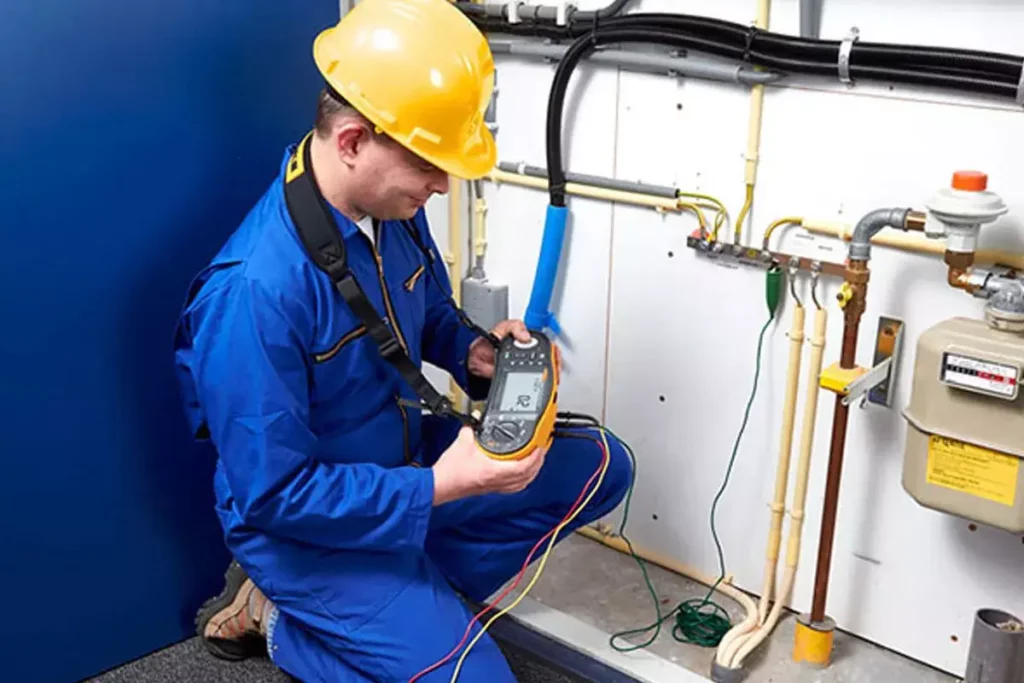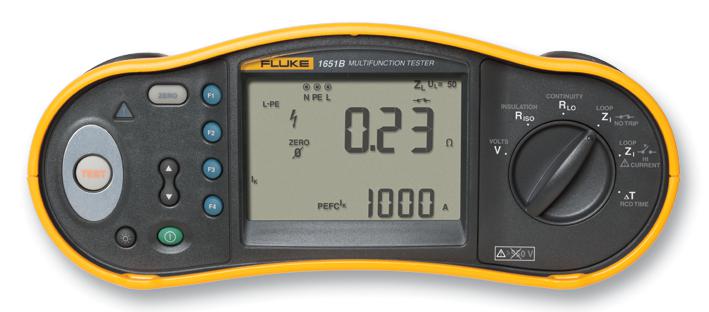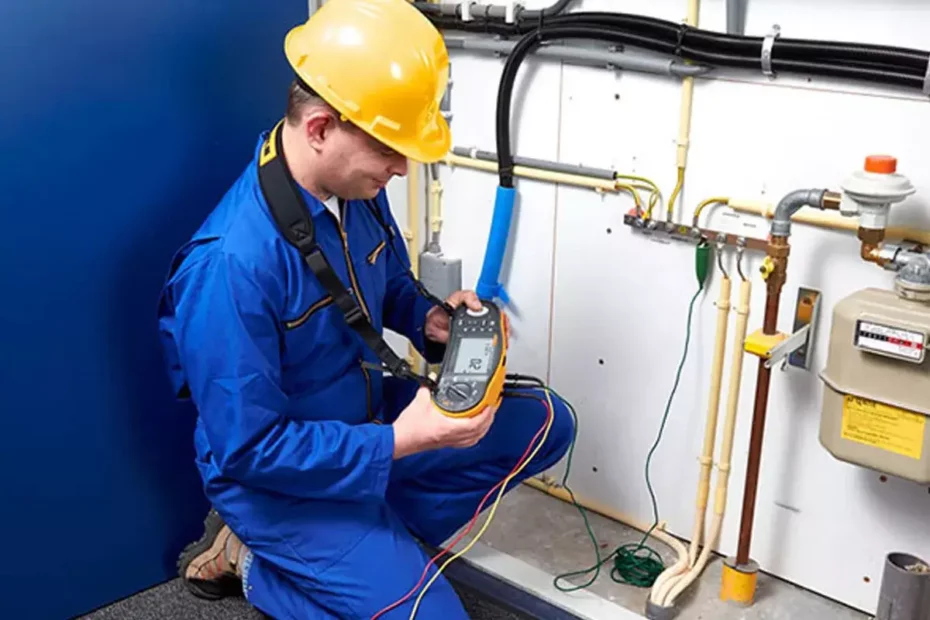Measurement of earth loop impedance and determining the Prospective Fault Current (PFC) are critical for safety and form integral parts of the International Electrotechnical Commission (IEC) guidelines.
Standard IEC 60364 (and its various national equivalent standards) specifies the requirements for fixed electrical installations in buildings, including verification of protection by automatic supply disconnection.
The new Fluke 1650 Series Multifunction Installation Testers have a loop impedance test function in addition to being able to measure prospective short circuit current (PSC) and fault current (PFC).
Table of Contents
Why Measure Earth Loop Impedance?
Earth loop impedance testing is essential since if a live conductor is accidentally connected to an earth conductor in a faulty appliance or circuit, the resulting short-circuit current to earth can easily be high enough to cause electric shock or generate enough heat to start a fire.
Normally, the fuse will blow or another circuit protection device will trip. Still, a situation may arise where the actual short-circuit current in a faulty installation is of insufficient level and the protection device would thus take too long to activate. The delay can be disastrous for life and property.
It is therefore necessary to know if the impedance of the path that any fault current would take is low enough to allow sufficient current to flow in the event of a fault and that any installed protective device will operate within a safe time limit.
As the measurement of circuit loop impedance is made with the supply normally on, precautions must be taken to avoid the possibility of electric shock and danger to personnel working in the vicinity of the circuit under test.
Verifying Protection by Automatic Supply Disconnection
In IEC 60364, fault loop testing falls under the category of ‘Verifying protection by automatic supply disconnection’. This covers the verification of the effectiveness of protective measures, and the test methods applied depending on the type of system.
TT systems, for example, require measurement of the earth electrode resistance for exposed-conductive parts of the installation, whereas IT systems use calculation or measurement of the first fault current.
This application note looks specifically at TN systems, which require measurement of the fault loop impedance and verification of the characteristics of the associated protective device (i.e. visual inspection of the nominal current setting for circuit-breakers, the current ratings, and blow characteristics for fuses, and the correct functioning of RCDs).
The earth loop impedance of each circuit from the point of use back to the incoming supply connection point should be measured.
A separate measurement of the external loop impedance of the installation can also be made at the incoming supply point or main distribution panel and this value will form part of the overall loop impedance from any part of the final circuit installation.
Knowing the earth loop impedance, it is possible to calculate the value of the prospective fault current (PFC) at any point in an installation and to ensure that all installed protective devices are of an adequate rating to clear the potential fault current level.
Measuring Earth Loop Impedance

Since the AC impedance of a circuit may be different from its DC resistance – particularly for circuits rated at over 100 A – the fault loop impedance is measured using the same frequency as the nominal mains frequency (50 Hz).
The earth loop impedance test measures the resistance of the path that a fault current would take between the line and the protective earth. This must be low enough to allow sufficient current to flow to trip a circuit protection device such as a fuse or miniature circuit breaker.
The Fluke 1650 Series testers can be used to carry out the test at a distribution board using the three separate test leads supplied, and at appliance outlets using a dedicated lead fitted with a mains plug. A plug of the appropriate national standard is also supplied with the instrument.
Dedicated functions on the Fluke 1650 Series
The Fluke 1650 Multifunction Installation Testers have a dedicated function to measure the earth resistance component of the total loop resistance.
They also have a dedicated function for carrying out basic earth loop impedance measurements between line and protective earth, and can directly display the results in ohms. Measurements should be taken at all outlets of the installation, including light fittings and all distribution (sub-) panels.
The Fluke 1650 Series includes several useful features to help with earth loop testing, including an ‘Auto-null’ to remove test-lead resistance from measurement and Automatic overheat protection. Loop measurements are displayed with 0.01-ohm resolution.
The instruments can also measure the line impedance, that is, the source impedance between line and neutral or the line-to-line impedance in three-phase systems, although these tests do not form part of the earth loop impedance tests specified in IEC 60364.

Conventional techniques for measuring loop impedance can often trip RCDs, preventing further measurement. Often the only way around this is to “bridge” the RCD or replace the RCD with an equivalent rated MCB for the duration of the test – both of which are potentially dangerous and time-consuming practices.
To overcome this in the Fluke 1650 series, Fluke has applied innovative and patented technology to ensure that both electromechanical and electronic type RCDs do not trip during earth loop impedance measurements.
This technology gives more consistent results and also allows a concise test period, considerably less than the time required by most conventional installation testers.
Calculating Prospective Fault Current
In addition to measuring the earth loop impedance, the Fluke 1650 Series automatically calculates the Prospective Fault Current (PFC) and displays it in the lower part of the dual display. Determining the PFC is important to ensure that the capability of fuses and over-current circuit breakers are not exceeded.
It can also provide a direct readout of the Prospective Short Circuit Current (PSC).
Interpreting results and taking remedial action
Remember that it is not sufficient just to carry out tests and record the results. Knowledge of local regulations – and of how to interpret results – is also required to ensure the installation’s safety characteristics are within the prescribed limits.
An excessive earth loop impedance value should, for example, prompt an investigation into its cause. Remedial action should then be carried out, and the installation retested.
Conclusion
In conclusion, the importance of measuring earth loop impedance and prospective fault current in electrical installations cannot be overstated.
The new Fluke 1650 Series Multifunction Installation Testers have made this task more straightforward and more accurate. With dedicated functions to measure earth resistance and basic loop impedance, the instrument can display results in ohms with 0.01-ohm resolution.
Sapphire Technologies is an authorized Fluke dealer in Bangalore, Karnataka. Contact us to know more about earth loop impedance testing at your electric facility.
